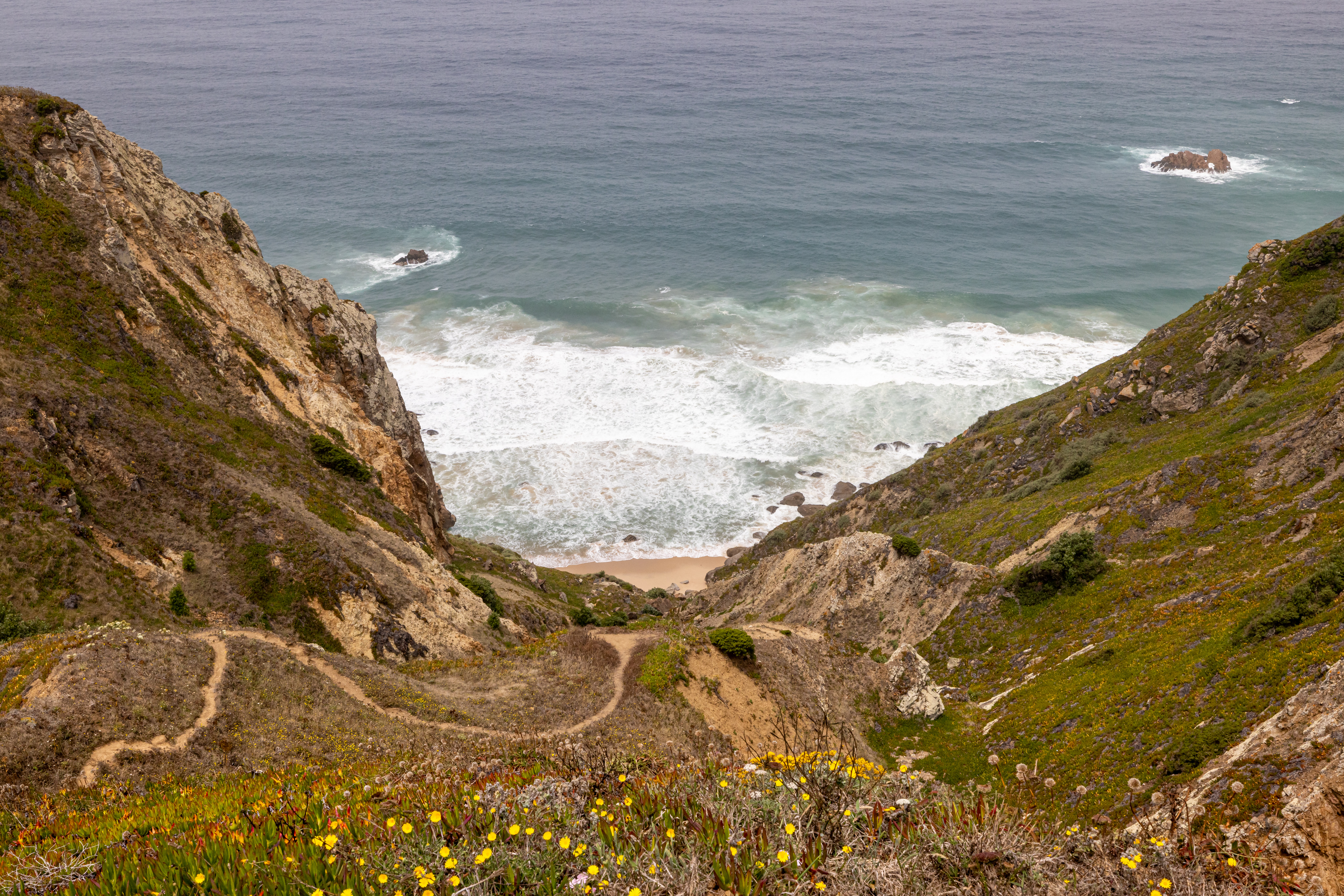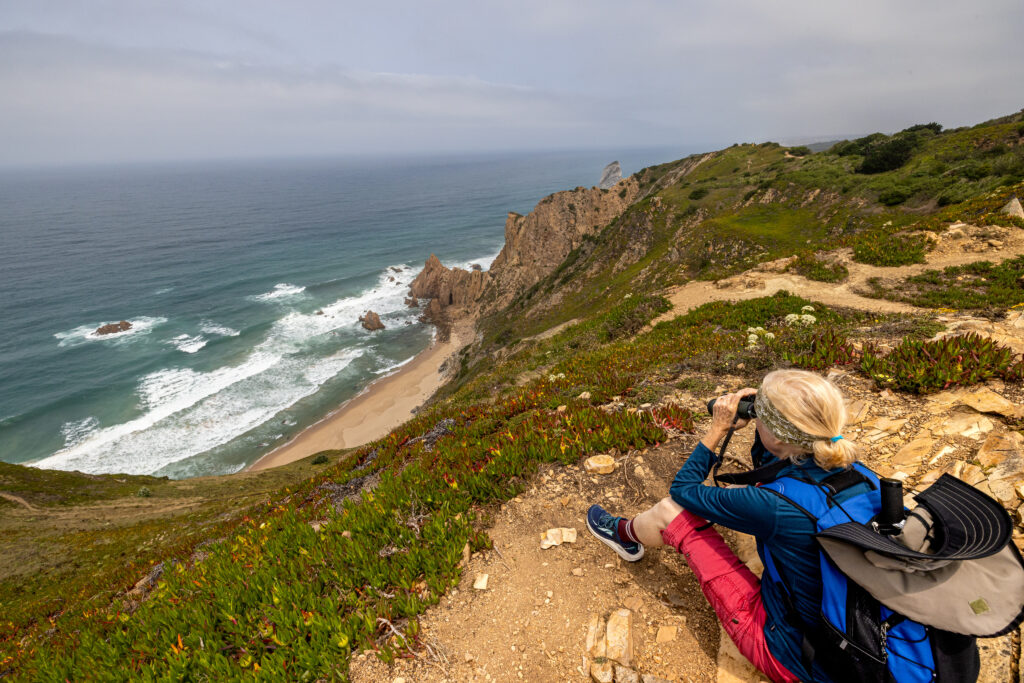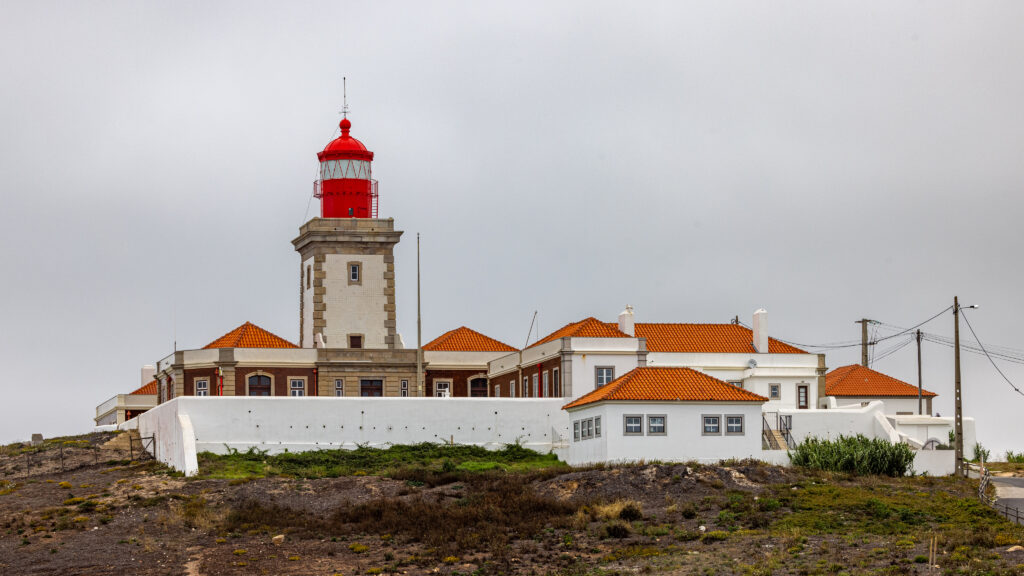
Cabo da Roca is the westernmost tip of continental Europe, facing the Atlantic. Its distinctive red-crowned lighthouse was originally built in 1772. It is part of the Sintra park area, but it’s on the other side of the Sintra mountains from the palaces and castles that we visited last fall. I’ve been looking forward to the drama of cliffs and sea.
The journey was a fun public-transportation expedition. What I’ve written mostly describes how we got there. The pictures show the place.
Shore-side train to inland bus
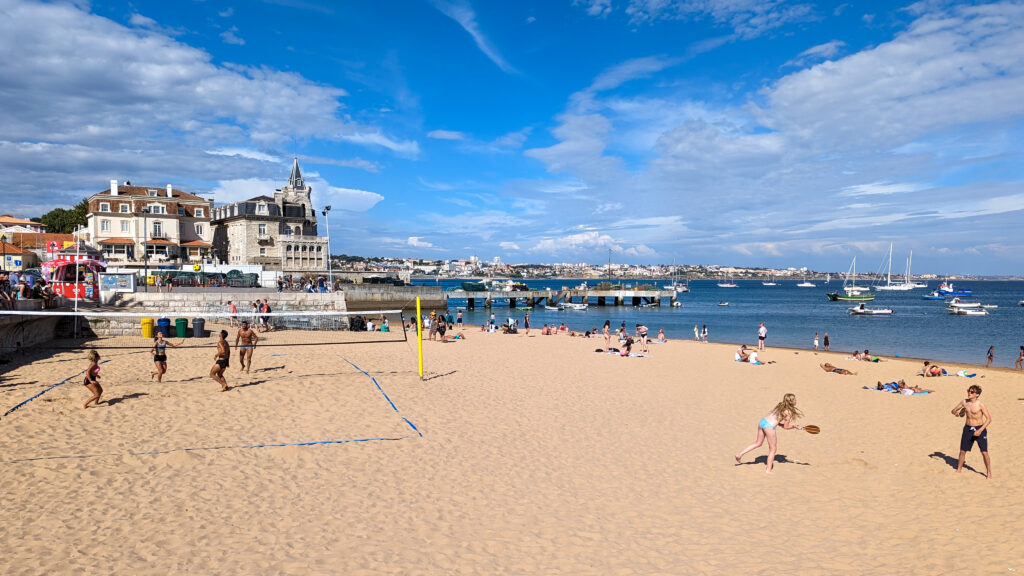
We took the train to Cascais at about 10am and then looked for the 1624 bus. The bus depot in Cascais is across the street from the train station. There were eight or nine stopping points within the depot. We had a 25-minute wait, so there was time to check them over. We finally found the right one with some guidance from a local who wanted to help some confused tourist types.
Our bus went overland to the northeast, through the suburban edge of Cascais, then into the hilly, twisting roads of the Parque Natural de Sintra-Cascais. As we rode higher, we got a view to the west of the Atlantic and the big beach, Praia de Guincho.
We planned an outing in the middle of a June heat wave. It has been getting up to 30 degrees Centigrade and higher in the city areas. The resort town of Cascais, on our way to Cabo da Roca, has been a little cooler. We wondered if we needed a sweater, but how could it be so hot in Lisboa and Caxias (not as hot as Lisboa), that we’d need a sweater? Turns out we could have used a windbreaker.
Grand vistas of the Sintra park and the Atlantic
As we rode, we saw low clouds and fog on the Sintra hills, which have their own weather. Over the ocean, the gray-blue water blended seamlessly into a bank of dark gray cloud, and a white mountain of a cloud rose up to a dramatic peak.
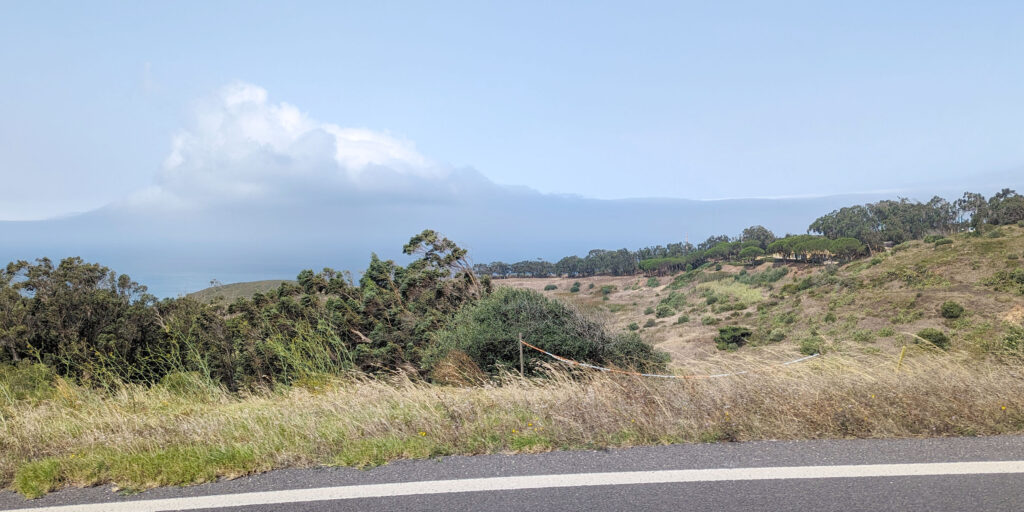
We passed through the village of Alcabideche, with its surfing and other water sport businesses. Surfing didn’t seem to belong that high up in the hills, far from shore. We were only a 3.5 kilometers from the shore, but it was a steep descent to the ocean. We traveled onward, via very twisty roads…our bus waited more than once for an oncoming bus to round a tight curve. Both buses on the curve together would have been a big mistake!
Arriving at the edge of Europe

We turned onto the road to Cabo da Roca, through the village of Azóia, and got our first glimpse of the red lighthouse. The bus dropped us off right in front of the information office, next to the lighthouse. From there it’s an easy walk to the western cliff. We walked out to the edge of the world and looked down from our clifftop onto the waves crashing below. The wind was impressively strong. Gusts knocked us backward as we tried to take photos. If we were going to stand in that chilly wind for a while, we would need those windbreakers.
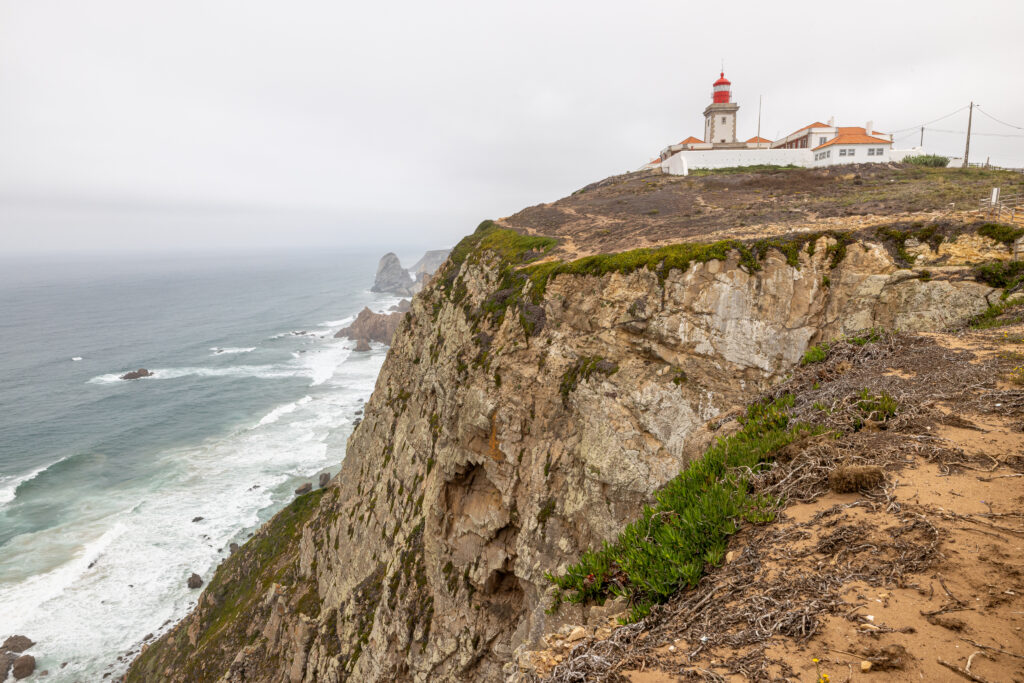

Lunch and a hike

We got some brochures for hiking trails at the information building and headed for the restaurant at 11:30am. It was a relaxed but long trip and we needed nourishment! We had a great veggie burger and a mini-pizza. We checked out the subtly labeled gift shop with nice but expensive souvenirs.
Then we headed to the clifftop hiking trails that head toward the north. David is going easy on a injured Achilles tendon, so we didn’t plan to walk far. There was a small peak overlooking the Praia da Ursa that gave us a grand view of the steep hills, the ocean below and the lighthouse behind us. By now, the sun was breaking through the clouds and the wind was a little warmer.

